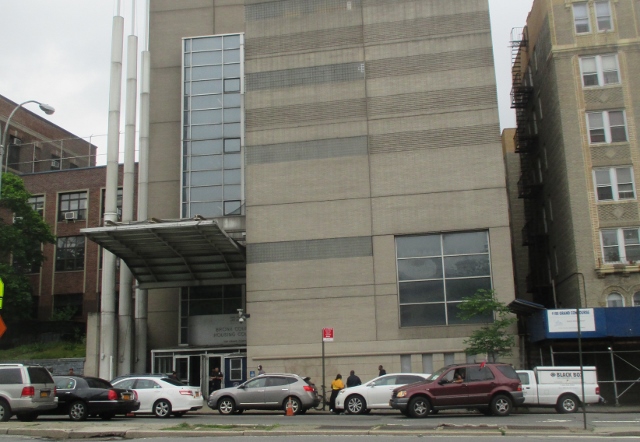
Photo by Tatyana Turner
By TATYANA TURNER and JASMINE GOMEZ
With current rent protection laws set to expire June 15, the debate over whether the laws should be renewed or strengthened has intensified in Albany, where the legislature is charged with drafting the rent laws. Tenants and Democratic elected officials are advocating to close loopholes in the current rent laws while calling for more housing options for the working and middle class. In the last few months, workshops by Bronx elected officials have sounded the alarm in making sure tenants know their rights.
With rent laws edging toward expiration, the Norwood News explored some of the more contentious laws that Albany legislators from both sides of the aisle have been fighting over:
Vacancy Decontrol
Perhaps one of the more controversial topics proponents of affordable housing want to eliminate is vacancy deregulation, which began back in 1971. Vacancy decontrol allows landlords to raise the rent of a stabilized apartment to market-rate prices should a stabilized tenant move out. This policy may sometimes lead to tenant abuse, as landlords may find schemes to remove stabilized tenants. The maximum stabilized rent runs $2,500.
But one way around that happens, for instance, if a stabilized tenant edges closer to that threshold. So if a tenant who once paid $2300 in stabilized rent moves out, the landlord can legally raise the rent by 20 percent to a new leased tenant. This pushes the rent to $2,760, resulting in a deregulated apartment.
According to the Metropolitan Council on Housing, vacancy decontrol has already led to the deregulation of 200,000 to 300,000 units.
Major Capital Improvement
A major capital improvement (MCI) allow for a rent increase for a rent-controlled or rent stabilized tenant by as much as six percent. Each MCI increase per project needs approval by the Division of Housing and Community Renewal.
A landlord must prove that the renovation benefits all tenants, meets all requirements in rent regulation, be used for preservation and maintenance, and must be used for capital repairs. Landlords then pass the cost on to tenants in the form of a rent increase, which can lead to a permanent hike if repairs continue.
The increase is determined by how much the landlord spends on improvements such as windows or appliances. Therefore, tenants will continue to get charged until the landlord is reimbursed. “You can pay for MCIs forever. A portion is given to each tenant while the rest is just profit for the landlord; rent goes up fairly steadily because of this,” said Sally Dunford, executive director of West Bronx Housing.
Advocates are looking to have MCI eliminated altogether, arguing it’s merely an excuse for landlords to raise rents.
421-a Program
The 421-a Affordable Housing Production Program is a tax abatement program that began in 1971 to spur residential development across the city. Between 1971 and 2006, 421-a created over 100,000 new housing units and provided a tax exemption for new construction, resulting in a loss of $300 million in city tax revenue, according to the Pratt Center for Community Development. Critics of 421-a have long argued it as an example of income inequality.
But in 2006, the incentive was significantly weakened after elected officials thought the program no longer necessary. The following year, changes were made to the incentive and landlords were forced to go through another process to receive 421-a benefits. The Department of Housing Preservation and Development (HPD), which monitors the 421-a program, determines whether a building qualifies for the program based on certain criteria such as location, method of construction, and whether it would set aside affordable housing units.
Some legislators want the 421-a program weakened as some believe it’s an archaic law created when residential development was stagnant in New York. Proponents of 421-a have lobbied lawmakers to strengthen the law as it can stem any new type of affordable housing that New York City has been fighting to preserve.
The Politics
Governor Andrew Cuomo is one of the deciding factors on whether rent protection laws should be strengthened. In an op-ed published in the New York Daily News, Cuomo pushed for improved rent laws by either eliminating vacancy decontrol or watering it down altogether. He also called for limiting “vacancy bonuses to ensure landlords aren’t rewarded financially for schemes to force tenants out; make major capital improvements and individual apartment improvement surcharges that go away once recovered by landlords….”
Cuomo added that if new rent regulations are not passed by the end of this legislative session, he will call a special session until the regulations are passed.
Mayor Bill de Blasio has called on Albany to end vacancy decontrol, barring landlords from converting affordable housing into luxury apartments, while also calling for the end of permanent rent hikes landlords impose after making capital improvements to the dwelling.
De Blasio is also advocating for the end of tax breaks for luxury condominiums or for developers who will not create affordable housing, should Albany not pass stronger rent regulation laws or impose a mansion tax.
The state Assembly has already passed a reform package that extends the current rent laws for four years, with the inclusion of reforms that allows for the preservation of affordable housing units. These reforms include eliminating vacancy decontrol and prohibiting rent hikes in vacant apartments.
Its so-called omnibus bill will likely clash with those by the State Senate, currently ruled by Republicans, who have long remained pro-landlord.





Thank you Norwood News. Very well written and informative article.
Astounding!! thank you very informative.